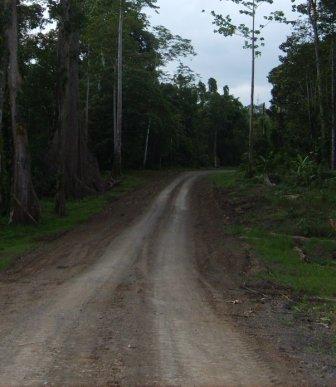This study looks at five different techniques to reduce sediment pollution from unpaved roads.
The title of the study was “Environmentally Sensitive Maintenance Practices for Unpaved Roads: Sediment Reduction Study”, and it was authored by Dr. Barry Scheetz and Steven Bloser of the Centre for Dirt and Gravel Road Studies at the Pennsylvania State University.
The five environmentally sensitive maintenance practices that were  evaluated were:
evaluated were:
-
Driving surface aggregate (DSA) – adding durable and erosion resistant road surface
-
Raising the profile – raising road elevation to restore natural drainage patterns
-
Grade breaks – elongated humps in the road surface designed to shed water
-
Additional drainage outlets – creating new outlets in the ditch (side drain) to reduce channelized flow
-
Berm removal – removing unnecessary berms and ditches on the downhill side of the road to encourage sheet flow.
A rainfall simulation device was used so that the trials could be repeated and sediment loads calculated. The key results of the study in terms of sediment reduction are as follows:
-
Adding suitable DSA - 75% reduction after one month and 90% after a year compared to the existing road.
-
Raising the profile – 82% after one month and 87% after a year.
-
Grade breaks – 43% and 57% over two sections of road.
-
Additional drainage outlets – 48% from the down-slope ditch only and 31% when considering the entire road area.
-
Berm removal – 94% from the down-slope ditch only and 59% when considering the entire road area.
Adding suitable DSA actually reduces the amount of sediment leaving the road, whereas the four other techniques reduced sediment entering streams, but did not reduce erosion of the road surface. Suitable DSA should be used where drainage discharge into a stream is unavoidable, but in other locations a combination of the other techniques can be used to eliminate the high cost of additional DSA.
Source: www.dirtandgravel.psu.edu/research/cbc/CBC_REPORT_FINAL.pdf